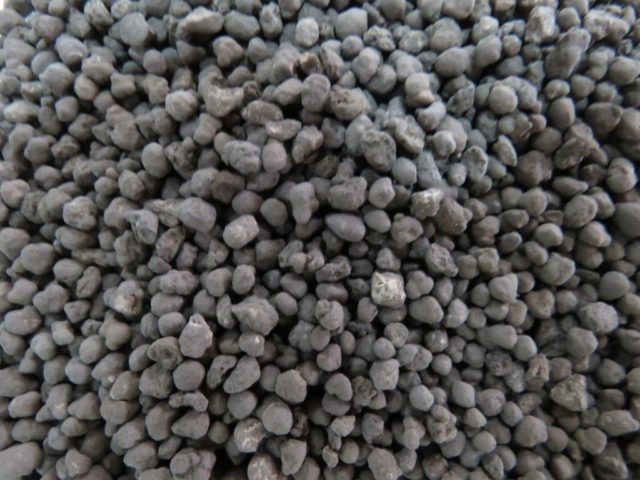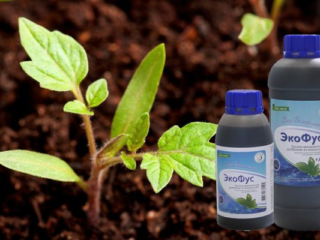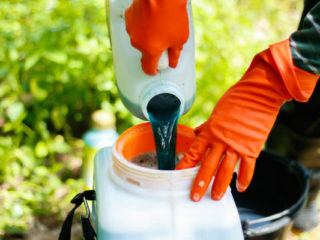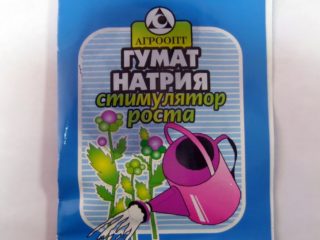Content
Early dressing of tulips in spring will ensure their abundant and long-lasting flowering. Mineral and organic fertilizers are used before and after the budding process. It is important to follow the schedule and rates of their application in order to provide the plant with all the necessary trace elements.

Large bright buds cannot be obtained on depleted soil without fertilization.
Features of feeding tulips
These fragile flowers have a short growing season, but they need a lot of nutrients during this time. Tulips absorb trace elements well during the period of bud formation. But for their long and bright flowering, the first feeding is carried out immediately after the snow has melted from the ground. During this period, fertilizers are important for forcing tulips.
The most important trace minerals for spring flowers are phosphorus, nitrogen and potassium. They are found in almost any complex fertilizer for flowering crops. But for the correct development of the flower and the formation of buds, organic matter is also needed.
If the flower garden has good, fertile soil, fertilizing is still necessary. Tulips respond well to additional nutrients.
How often to feed tulips
Each stage of plant growth and development requires certain types of fertilizers. The first time feeding is carried out during the germination of tulips.

Flowers that break through the thickness of the earth need to stimulate growth
Tulips are fertilized again during the formation of buds, the third time the flower is fed during the flowering period and after its completion. In total, bulbous plants are fertilized at least 3 times per season.
Types of dressings for tulips
Flowering crops require nitrogen, phosphorus and potassium. In addition to them, the plant needs iron, iodine, magnesium, zinc, iodine, copper.
Mineral fertilizers
After the snow melts, the first feeding for bulbous plants is applied. It must necessarily contain nitrogen, potassium or phosphorus. Early dressing of tulips in spring is necessary for their abundant flowering.
Suitable fertilizers:
- phosphoric in the form of superphosphatea - stimulate the laying of buds, strengthen the root of the plant, but this element must be dosed, since it is deposited in the soil;
Superphosphate in the form of granules is easy to use as fertilizer
- potash: potassium sulfate, wood ash, potassium salt - increase plant resistance to diseases, stimulate the laying of healthy bulbs, increase their number;
- fertilizing with nitrogen: ammonium nitrate, ammonium sulfate, ammonium nitrate and urea stimulate the appearance of large, colorful buds, the green part of the plant becomes strong.
Iron is important for the growth of tulips, without it the leaves and stem turn yellow, the plant weakens. With a lack of magnesium, rusty spots appear on the leaves of the culture, the plant begins to wither and die.
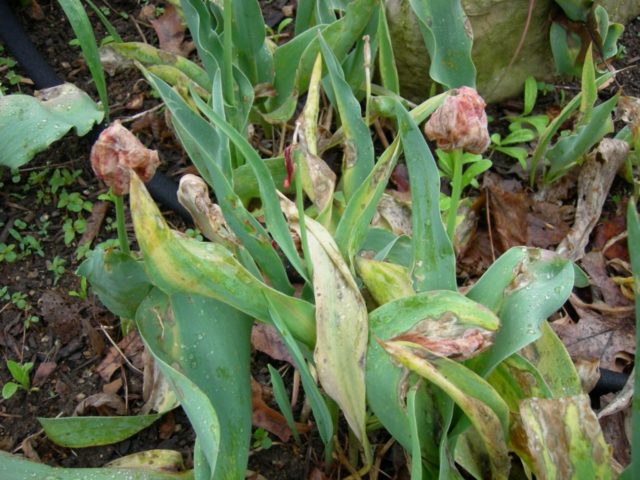
Lack of iron and magnesium immediately affects the appearance of the plant.
Molybdenum is important for metabolic processes; without it, tulips are prone to chlorosis.

With chlorosis, the color of a part of the plant changes
The lack of each of these substances leads to a deterioration in the condition of the green and flowering part of the plant.It is important not to allow an overabundance of minerals - the culture will begin to ache, and the bulbs will stop forming.
As a top dressing, it is better to use complex mineral fertilizers, such as Kemira Universal. The watering solution is prepared according to the instructions.
Folk remedies
Immediately after the snow melts, the tulip beds are spilled with a solution of mullein and water in a ratio of 1:10. The nutrient fluid stimulates the awakening of the bulbs.
Baker's yeast (1 small pack per bucket of water) can speed up the growth of early tulip varieties. The solution is made on the basis of a warm liquid, poured over the sprouts that break through in the spring.
Sugar (1 tbsp. L.), Diluted in warm water (0.5 l), accelerates the growth of the green part of the plant. Also, the solution is able to awaken bulbs that do not hatch for a long time. Sugar water is poured over the sprouted tubers at the root.
What fertilizers to apply for tulips
For feeding, complex purchased fertilizers are used or the necessary microelements are added separately. In spring, nitrogen and potassium are especially important to prepare the plant for flowering.
How to fertilize tulips in spring
For the first time, top dressing is applied immediately after the snow melts. Dry fertilizers can be scattered in a thin layer over the flower bed and embedded in the ground by shallow loosening. For these purposes, humus is suitable. It is taken at the rate of 5 kg per 1 sq. m and dug up with soil, then moisten the earth from a watering can.
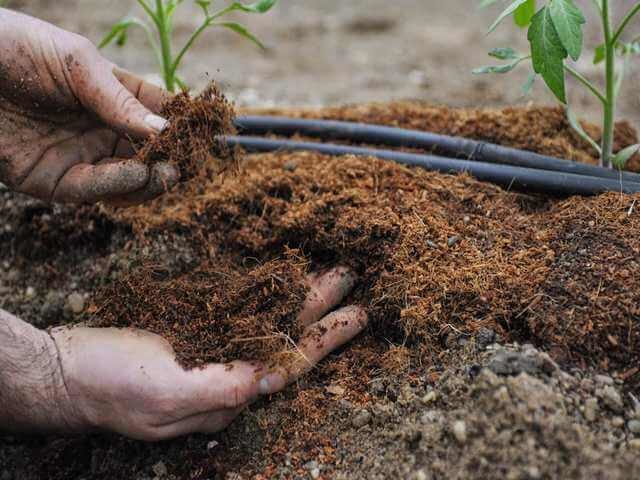
Dry rotted organic matter is mixed with the ground to a state of homogeneous mass
Top dressing of tulips in spring with urea is carried out as follows: 30 g of the substance is dissolved in a bucket of water, beds with hatching bulbs are spilled with liquid.
Top dressing of tulips in spring with ash is good to carry out even on the ground wet from snow. To do this, 20 g of ammonium nitrate is mixed with a glass of wood ash. This amount of fertilizer is enough for 1 sq. m. Dry top dressing is sprayed on wet soil, dug shallowly.
A mixture of boric acid and zinc stimulates bud formation well. They bring it under the root or spray the green part of the plant. To prepare the nutrient solution, take 10 g of boric acid and zinc, dissolve in 10 liters of water.
As soon as the tulips grow in spring, the process of laying the buds will begin, you will need to feed with Azophos. This drug is also called nitroammophos.
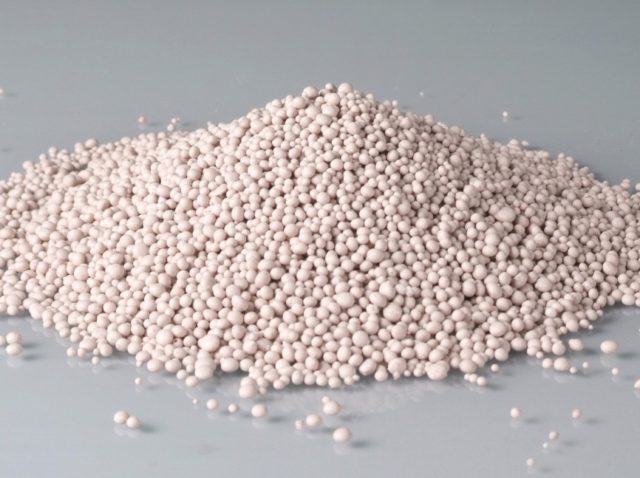
Fertilizing complex, granular, contains nitrogen and phosphorus
The granules are scattered over the flowerbed with tulips, loosened the soil, then watered abundantly. After laying the buds, irrigation should be reduced, otherwise waterlogging can lead to rotting of the root system.
In the process of feeding tulips in the spring during budding, you can spray them with a complex preparation - "Plantafol" (Plantafol). It is taken at the rate of 20 ml per 1.5 liters of water.
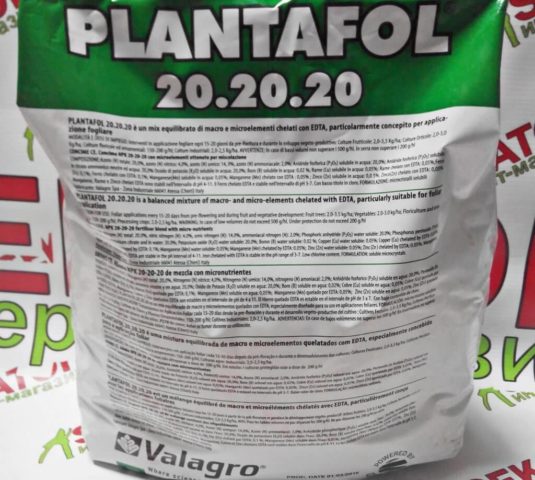
The composition of the dressing includes all the necessary trace elements for a lush and long flowering
During the flowering period, it is better to use purchased complex preparations: Kemira, Planta, Gera. Their composition is balanced, only the trace elements it needs in the right amount will be supplied to the plant rhizome.
You can replace ready-made additives with the following composition: 15 g of potassium nitrate, 30 g of superphosphate, 10 g of urea.
All substances are granular, they are easy to mix and sprinkle on the soil in a tulip flower bed. This amount of fertilizer is taken per 1 sq. m.
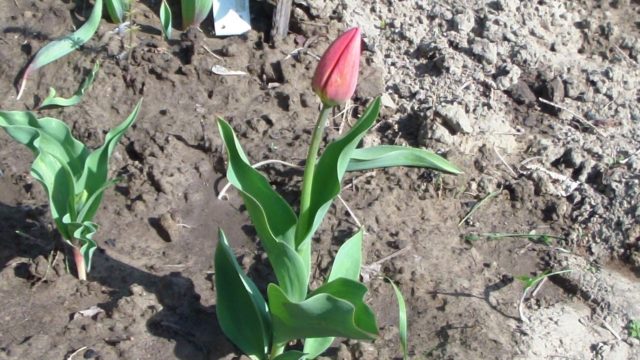
The dry mixture is sprayed only on moistened soil; it must not be allowed to fall on the green part of the plant
After 2 weeks after flowering, it is necessary to carry out another top dressing. It stimulates the formation of quality planting material. For its preparation, take 1 tsp. potassium sulfate and 1 tbsp. l. superphosphate, dissolved in a bucket of water.For watering one plant, you will need 0.5 liters of liquid.
How to fertilize tulips in autumn
In the process of autumn feeding, the main necessary microelements are also added to the soil: phosphorus and potassium. Substances are introduced into a dug, well-loosened soil 3 weeks before planting the bulbs.
For 1 sq. m, you will need rotted manure (at least 10 kg), you can replace it with humus. The bed is dug up along with the nutrient substance.
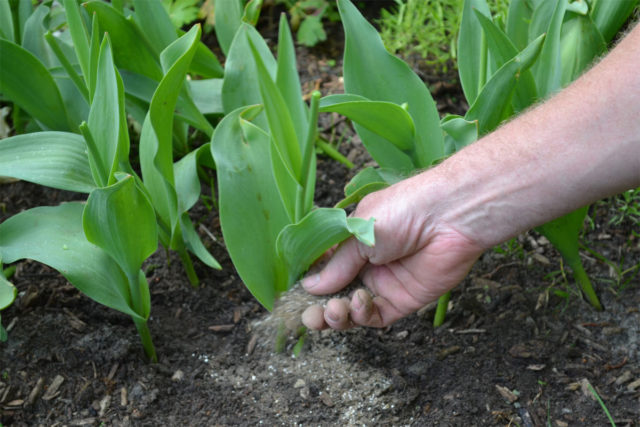
In the fall, you can add a glass of wood ash or dolomite flour to the soil.
Ready-made mineral fertilizer intended for bulbous crops is suitable for enrichment of autumn soil. It is taken at the rate of 2 tbsp. l. for 1 sq. m.
Phosphorus and potassium are also added to the planting furrows. These trace elements contribute to the establishment of a strong root system, increase the resistance of the planting material to diseases, adverse weather conditions.
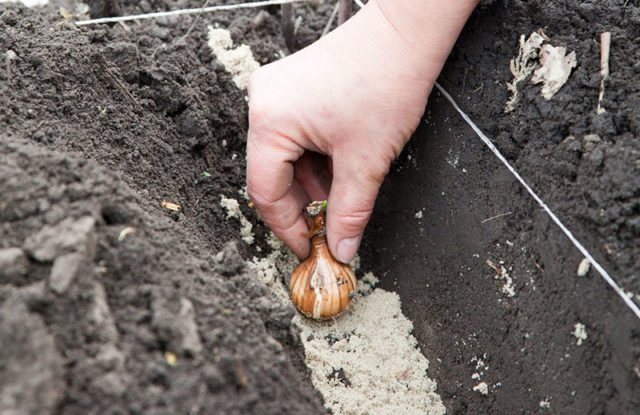
Tulip bulbs take root better in fertilized soil, they easily tolerate frosts, temperature drops, and a prolonged winter period
How to fertilize tulips
Bulbous crops are taken care of in early spring, as soon as the snow melts.
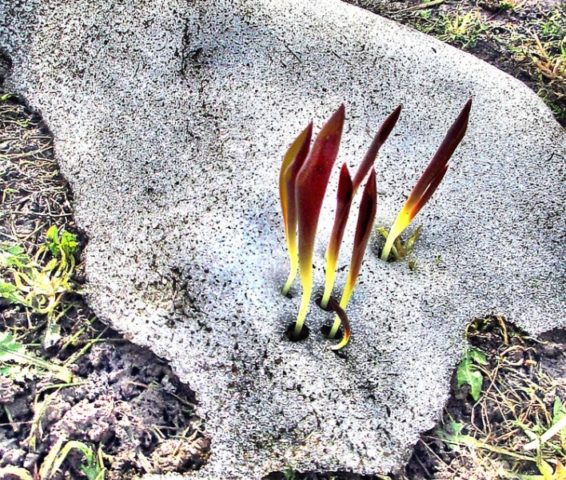
It makes no sense to scatter dry fertilizers over the ice crust, since it melts unevenly
Dry plots of land will be overly saturated with microelements, and those covered with snow simply will not receive them, because of this, germination and flowering may be uneven.
For feeding, only well-rotted manure is used, ideally it should be in the manure heap for at least 3 years. The same recommendation applies to humus: its “ripening” period should be at least a year.
Watering with fertilizers under the root is carried out with a watering can without a sprayer, many dressings are harmful to the ground part of the plant, they can simply burn it.
Tulips are watered with complex fertilizers only on damp ground. This will protect the rhizome of the culture from burns, increase the absorption of nutrients.
In autumn, fertilizers with nitrogen are not used, as they stimulate growth and abundant flowering. Their time is spring.
Useful Tips
Experienced flower growers advise to always follow the recommendations of the fertilizer manufacturer, not to overdose.
Other recommendations:
- Complex fertilizers are purchased only for flowering bulbous crops.
- It is important to separate autumn and autumn dressings, their composition and dosage differ.
- Before fertilizing, tulips and the surrounding soil are watered abundantly.
- Do not allow water and liquid fertilizers to get on the leaves - this leads to the formation of burns.
- It is important to maintain an interval of at least 5 days between the introduction of various types of dressings.
- If, after flowering, you feed the tulip with zinc or boron, this will stimulate the growth of daughter bulbs.
Timely feeding of tulips in spring will stimulate their abundant and regular flowering.
Conclusion
Fertilizing tulips in spring is the most important agricultural procedure for flowering crops. Correctly applied fertilizers will strengthen the plant, leaving no chance for diseases. The main purpose of top dressing is to achieve abundant and long flowering, to keep the stems and leaves of plants juicy and green.
